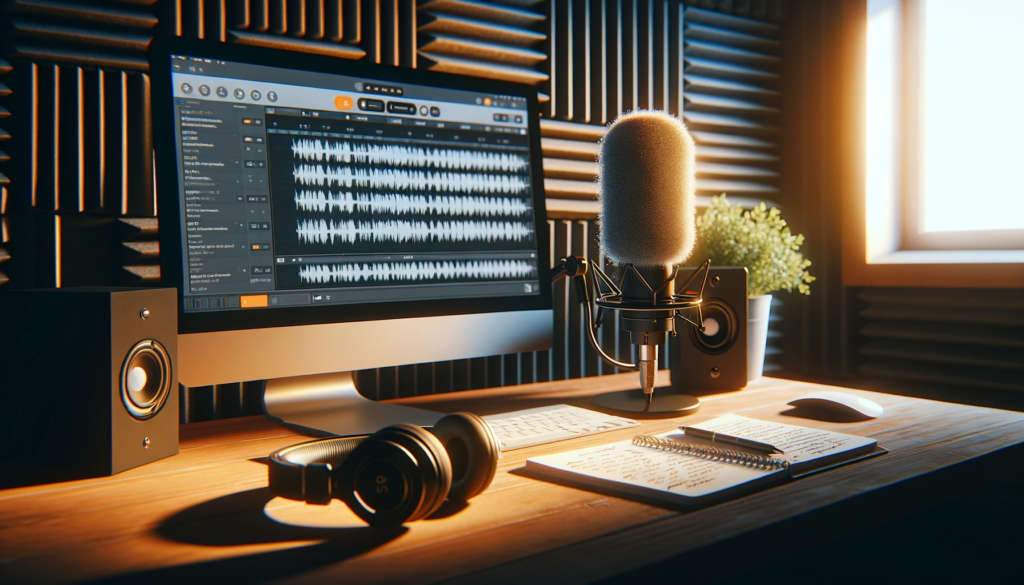Creating a home podcast studio is an exciting venture for any content creator. One of the main challenges, however, is achieving studio-quality sound in a non-professional environment. With a few strategic choices and some DIY savvy, you can transform your space into a silent sanctuary that lets your podcast’s content shine without the distraction of unwanted noise.
Location, Location, Silence!
Begin by choosing the quietest space in your home. A room with minimal external noise and low foot traffic is ideal. Basements can be a good choice due to their separation from street-level noise, but be wary of high-powered appliances that can introduce background hum.
Soundproofing: The First Defense
Soundproofing is crucial in creating a silent studio. Start with the basics:
- Door Sweeps and Weather Stripping: Seal gaps where sound can travel, especially under doors.
- Window Treatments: Use heavy drapes or acoustic curtains to dampen sounds from outside.
- Wall Hangings: Decorative rugs and tapestries can absorb sound. The thicker, the better.
Acoustic Treatments: The Sound Sculptor
Once you’ve minimized outside noise, the next step is to manage the sound within your space.
- Acoustic Foam Panels: These are designed to reduce echoes and can be placed strategically around your recording area.
- Bass Traps: Fit these in room corners to control low-frequency noise.
- DIY Solutions: If on a budget, bookshelves stuffed with books and closets lined with clothes can serve as makeshift sound absorbers.
Microphone Magic
The type of microphone you use can dramatically affect how much ambient noise gets picked up.
- Dynamic Microphones: They’re less sensitive than condenser mics and are better at rejecting background noise.
- Cardioid Pickup Patterns: Mics with this pattern are most sensitive to sound from the front, which helps isolate your voice from unwanted room noise.
Isolation Shields: Your Mic’s Best Friend
An isolation shield can be attached to your microphone stand to block out unwanted noise from the sides and back, further focusing on your voice.
The Right Stand: Stability Meets Function
A good microphone stand will keep your mic positioned correctly and can reduce vibrations that lead to low-level noise.
- Suspension Booms: These can be ideal as they often come with built-in shock mounts.
Floor Factors: A Solid Foundation
If your studio has hard floors, adding carpet or a thick rug can minimize echo and absorb sound, creating a more controlled acoustic environment.
Tech to the Rescue: Noise Reduction Software
Despite all your best efforts, some noise might still get through. This is where noise reduction software can save the day:
- Digital Noise Reduction: Software like Audacity (free) and Adobe Audition (paid) have tools that can help clean up your audio in post-production.
Regular Testing: The Key to Consistency
Always test your setup before recording:
- Listen Critically: Record a sample and listen for any noise issues.
- Make Adjustments: Tweak your setup and test again until you’re satisfied with the results.
Conclusion
Building a silent home podcast studio is all about attention to detail. By choosing the right room, incorporating soundproofing and acoustic treatments, selecting the proper equipment, and using tech when needed, you can achieve a recording space that rivals professional studios.
Remember, your podcast’s audio quality can engage your audience or distract them. Ensure every word comes through crystal clear by investing time and effort into creating a silent studio space.
Looking for expert guidance or need professional help setting up your home studio? Sound Concept Media is at your service. With over two decades of audio production experience, we can help you fine-tune your space to achieve the best sound possible. Contact us today to make your podcast sound impeccable from the comfort of your home.

